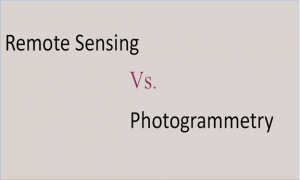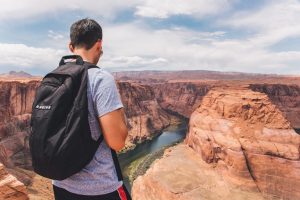1. Land Consumption Rates
Consumption Rates are ratios of land use to the growth of the population. They are a good indicator for measuring the efficient use of land. Remote sensors use such ratios to guide the town planners and designers on managing town growth at multiple scales, thus promoting the ability to use the land well and effectively.
2. Town Growth and Land Use Patterns
Town growth is the rate at which the population of a town increases. On the other hand, the land use pattern is arranged for various reasons. These patterns include forest areas and wastelands that are cultivatable and fallow lands.
Therefore, information obtained from remote sensing regarding town planning helps the town planners to analyze and monitor the growth of towns and the patterns of land usage. In addition, remote sensors help evaluate old imagery time series of land use and land cover.
3. Town Environmental Issues
The town environment is a critical component in determining the quality of life in a particular town and the impact on the border environment. Some environmental issues observed during town planning are water shortages, air pollution by industries, poor rubbish disposal management, etc.
Remote sensing creates information based on environmental factors. As a result, it enables town planners to monitor urban environmental issues and set effective policies to guide them.
4. Town infrastructure
Town infrastructure is the service, facilities, and installation needed for the function of a town. They include communication networks, water and power lines, public institutions, and transport systems. Remote sensing plays a vital role in expanding opportunities to develop more infrastructure in the town.
5. Town Exposure and Sustainability
Exposure is a situation whereby people, infrastructure, housing units, and other tangible assets in the town are located in hazard-prone areas. There is a high risk of hazards exposure through increased population growth, migration, and economic development when this occurs. The exposure leads to the expansion of towns.
Remote sensors derive information to develop exposure data sets from various sources using various methods. It enables town planners to manage and mitigate the expected risk when it is hard to avoid.
6. Town Social and Economic Aspects
It includes income, education, security of the town residents, and employment opportunities. These aspects influence the growth of a town affecting how people live in that town. For example, employment provides income hence the need to change the choice of a house. As a result, more houses build led to the city’s expansion.
Remote sensing has a great potential to give such information to the town planners that will support monitoring and give relevant information for planning and decision making.
7. Town Health
Town health entails urban characteristics like social and physical environment and the infrastructure features in the town. These features can influence health and diseases in urban areas. Town health reflects outcomes of these characteristics and their impact on the residents of the particular city.
Remote sensing, therefore, is used as a platform to give theoretical evidence and analysis of the effects of the above characteristics of town to people. Remote sensing also contributes to better understanding the problems that will lead to health issues formulation of relevant policies to guide city planners.
8. Sustainable Development
Sustainable development in town is the development that involves meeting the needs of the present activities without compromising the ability of the future generations to meet their own needs. It is also defined as using resources while allowing them to be renewed for use by others in the future.
Remote sensing is used in sustainable development to measure, integrate and present critical information for decision making while undertaking such developments in town.
9. Town Heritage
Town heritage is the list of town heritage elements located in a town. Examples are historical sites, vernacular architectures, historical gardens, and festive events. It is essential to understand such aspects so that the planning and management in the city are well facilitated.
Remote sensors analyze the historical and contemporary impact of the activities of people at these historical sites. The information obtained from remote sensing allows planners of the town to assess the organization and structural patterns of the city. Moreover, the data helps to decide on sustainable tourism developments.
10. 3D and 4D Town Modelling
3D models are used to visualize a specific town or landscape.4D allows monitoring changes and dynamics of a city. 3D and 4D models can also be used for the technological process of monitoring the city. Information obtained from remote sensing helps the town planners to use computerized visualization techniques to encourage the public to participate in town planning.
11. Town Expansion
Town expansion is the rapid geographical extension of towns and cities. It is caused by industrialization, educational and recreational services, development of transport and communication networks, and rural to urban migration of people searching for white-collar jobs. Remote sensing is applied in the expansion of towns to generate information that will guide the town planners to accommodate the changes in the city while planning.
13. Town Sustainability
A sustainable town incorporates eco-friendly practices, green space, and supporting technology. Sustainability minimizes air pollution and carbon dioxide emissions, enhancing quality air and protecting natural resources. Remote sensing is used in town sustainability to close a gap between research results offered to the town planners and the application of these data into the management of the ecosystem in town.
14. Radar Application in Town Setting
Radar Application of a town setting involves detecting and locating objects in towns such as cars, pedestrians, and the natural environment, reflecting a signal. Remote sensing provides the relevant information used by town planners and urban designers to enhance the monitoring and detection of the targeted objects in town using radar Application methods
15. Synthesis and Analysis of Town Data
Data synthesis and analysis entail combining and examining ideas of a particular project that is taking place in a given town. It shows commodities, patterns, and elements that fit together in a city. It also forms part of the evaluation of the ideas by presenting several viewpoints or ideas
16. Town Population Modeling
Population modeling is a tool used to identify and describe the relationship between a subject’s physiological characteristics and observed drug exposure or response. Town planners use the information obtained from remote sensing to organize for the appropriate decision against the effects of population modeling.



